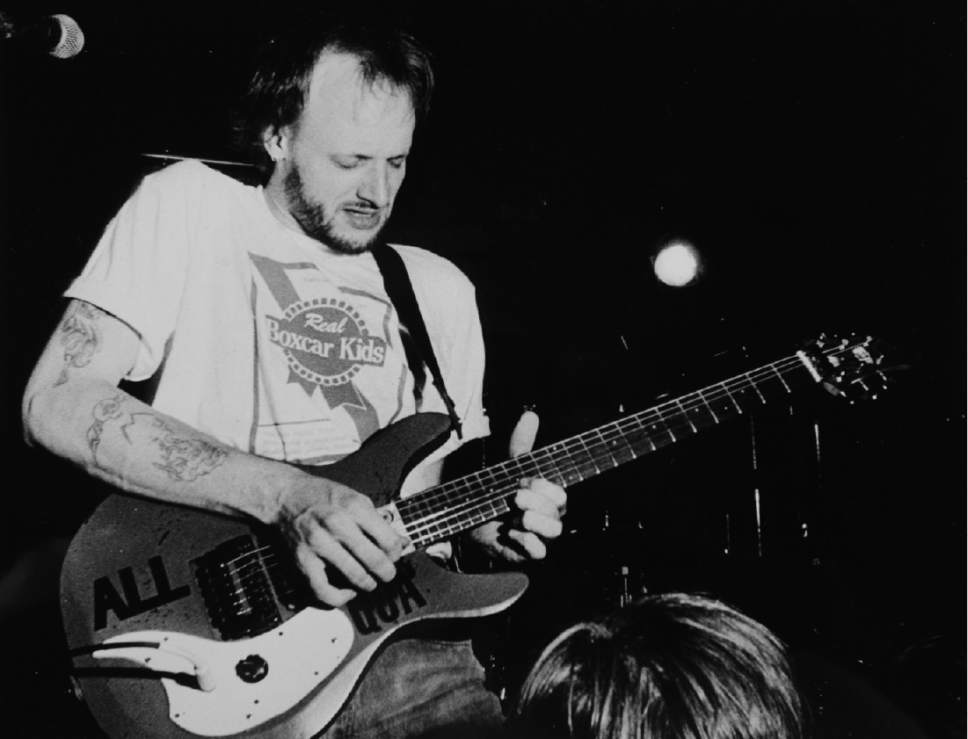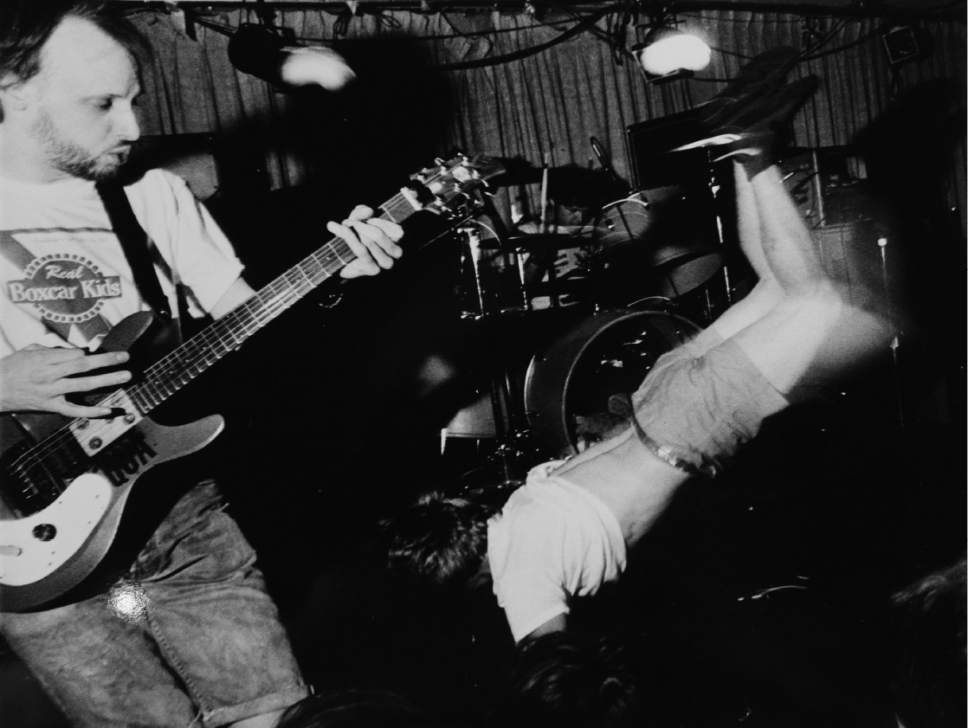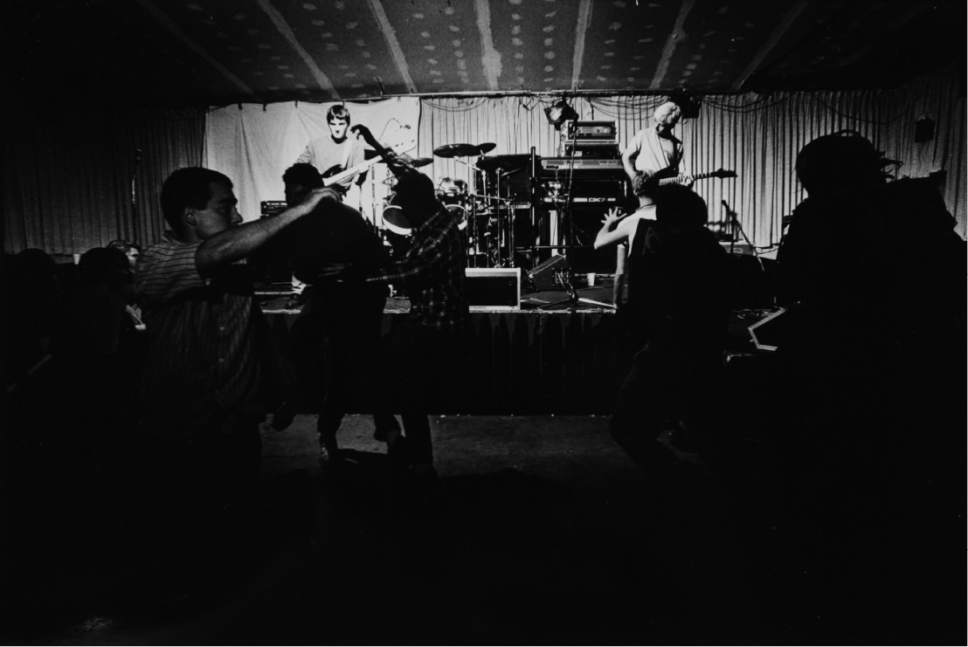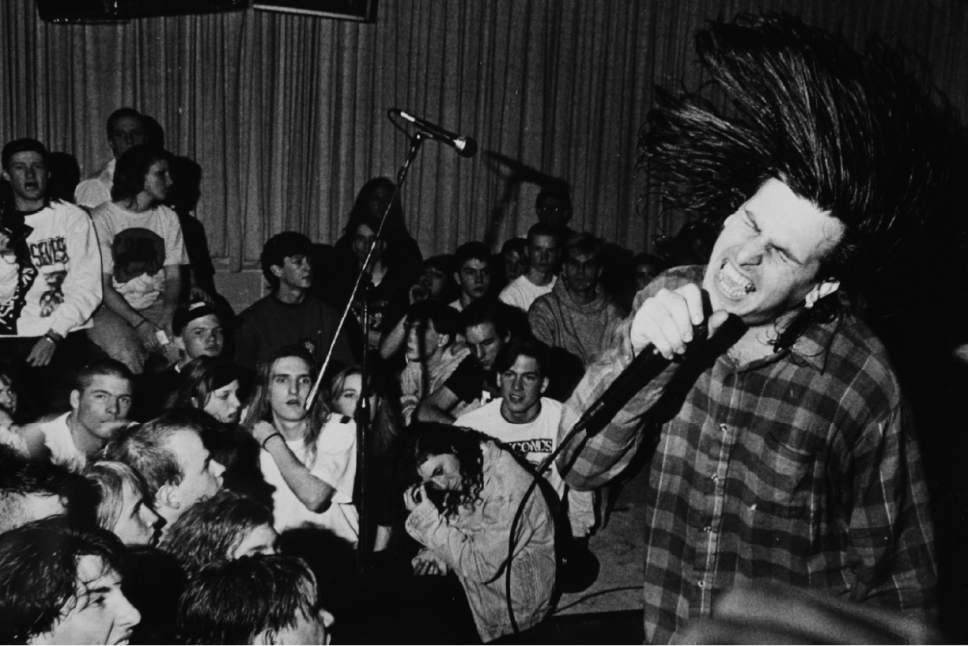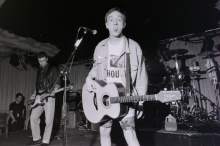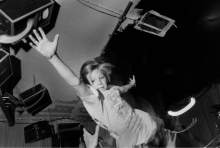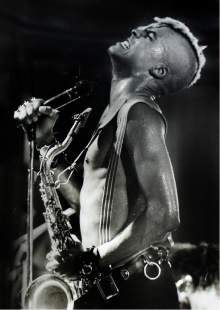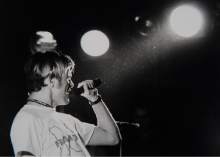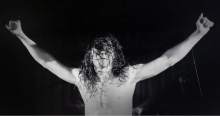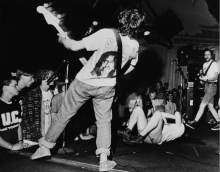This is an archived article that was published on sltrib.com in 2016, and information in the article may be outdated. It is provided only for personal research purposes and may not be reprinted.
Editor's note • In this regular series, The Tribune explores the once-favorite places of Utahns, from restaurants to recreation to retail.
—
That time when someone called the cops because Jello Biafra of the Dead Kennedys burned an American flag onstage.
That time when a crowd of punk kids, angered at a police officer who they felt was harassing one of their own, started bouncing his squad car.
That Gwar show, where ... actually, we can't really print what happened at the Gwar show in a family newspaper.
And that still-talked-about Ministry show, when some 700 people packed into a room that legally was allowed to have 290.
There are countless other stories of the Speedway Cafe, a much-missed live music hall that catered to Utah's punk and alt-rock tribes during the 1980s. Cruise by its old address at 505 W. 500 South, and while you won't see the building there anymore, you still might spot a bloodstain on the sidewalk.
—
All-ages sages • While there were various spaces in Salt Lake City that hosted punk bands going back to the music's late-1970s advent, a dedicated, well-run all-ages venue was something the city lacked. The behavior of some fans, like urinating on the floor during Indian Center punk shows, didn't exactly curry favor.
By 1984, two enterprising young men, Paul Maritsas and Zay Speed, thought they could do a better job at fulfilling fans' sonic and social needs. They took over a 7,000-square-foot warehouse that had been operating as a performance space and sometime-art gallery called Studio 505.
"I was in Angle, a band that played original music, but we couldn't get a gig in a bar because they only wanted top-40 cover bands," Maritsas says. "The only way I could play was to get my own place. I wanted to expose people to my band and the other musicians we had here."
Maritsas handled the money while Speed booked the bands. After some months of fine-tuning, the first official Speedway show featured local band Shot in the Dark on Halloween 1985.
"We were a great team, Paul and I," Speed says. "Every culture has to have a focal point, and the Speedway became that for the music community. The Incas had their altar, and from a social perspective, there has to be a place to go where you watch the lamb and the virgin being sacrificed."
A key to the Speedway's success was in earning its "brown bag" permit from the city, a since-outlawed provision that let people bring their own liquor to a restaurant. This way, the Speedway could have patrons consume alcohol on its property and admit the under-21 crowd. But the Speedway had to serve food to obtain the permit.
"Bands always ask for alcohol," Maritsas says, "so I knew that if I were to ever get national touring bands into my club, I would have to provide alcohol on the contract rider [a list of requirements from musicians that a promoter must meet]. So during the day, we became a cafe. I would make half a dozen sandwiches, eat one, our security guy would eat one so we could comply with the law, and we got our permit. We were a cafe that sold no food and a bar that sold no alcohol."
"Nowadays, there's no way you could have an all-ages nightclub with booze," Speed says. "Parents would pull up to the Speedway in their station wagon and drop their kids off. These days, they'd probably be arrested for child endangerment for doing that."
—
Somewhere to go • "The underground counterculture was huge here," says Tina Parsons, who controlled the Speedway's sound board. "It was the only room in the city that had punk bands and mosh pits. Bars didn't want to do punk because they were afraid they would get trashed, but the Speedway was perfectly set up for punk because there was nothing you could ruin — it was a concrete warehouse meant to be trashed."
"People loved the Speedway, not just because we booked punk rock, but because we had a mission," Maritsas says. "We wanted to expose you to as much music as we possibly could. Music is all-ages, whether you're 12 years old or 50 or 70. And for the youth back then, there was really no place to hang out besides State Street."
The Speedway quickly became a refuge for wayward kids dealing with rough home lives. For five bucks, they could see a night of music from 6 p.m. until 2 a.m., sometimes up to seven nights a week.
"There were people who practically lived there, people who slept outside," Speed says. "Some of them were 12 and 13 years old."
"There was no other place where kids could spray-paint a wall and the owner thought it was cool," Parsons says. "I don't know how many times Zay stayed there late at night and let homeless kids sleep in the back room. They literally had nowhere to go."
—
Punks not dead • At its heart, the Speedway was a punk club, and there were many wild nights that created some indelible memories.
"The shows got pretty rough at times," Speed says. "Many of my security crew ended up in the hospital — broken bones and such. I got hit in the head, hard, a lot. I still have about 10 bells going off in my head from the Speedway days. When you're at the front of the room, there'll be punk kids trying to impress their girlfriends by knocking out the owner."
The kids weren't the only ones needing an aggression release. One night, Speed decided to get into the mosh pit and was rewarded with a badly broken leg.
Which he then tried to set himself. Because ... punk rock.
"I almost put my leg back, then passed out," Speed recalls. "I come to, and Paul says, 'Zay, you can't set your own leg.' So I tried it again and passed out again. When I woke up, I was duct-taped to a wood pallet. They load me into the back of a pickup and take me to a hospital, and on the way, we went too fast over some tracks and I flipped out onto the snowy road. So now I was basically duct-taped to this sled, screaming, 'You're all fired!' Two days later, I built a new stage on one leg and we did Living Colour."
"I'll never forget Tragic Mulatto, this San Francisco group fronted by a couple of heavyset gals," Maritsas says. "They came out in bras and panties and did their show. One of the ladies picked up a Perrier, put the bottle between her legs and twisted the cap off. These 14-year-old Mormon kids in the crowd were just dying."
Then there was the night members of the British experimental band Psychic TV refused to go on unless they were supplied with eight pairs of black socks.
"I told them I could either run to the store and get them socks or give them a sound check, which do you want?" Maritsas says. "Eventually they went on, and they complained about everything. I'm on the side of the stage doing monitors, and their singer, Genesis P-Orridge, tries to kick me and just barely misses. Then he chases me around to the back of the stage. I turn around and double my fists because I'm about to punch him in the face, then one of his guys gets behind me with a chair, about to hit me, until Zay stepped in. Genesis gets back on stage and starts telling the crowd that I'm outside vandalizing their tour bus and terrorizing children, but I'm really in front of him yelling [obscenities] and the audience is joining my chorus."
—
No more anarchy in SLC • As the '80s dragged on and punk got rebranded as "alternative rock," bands that came through the Speedway were graduating to bigger rooms. Nine Inch Nails, Soundgarden, Primus, Fishbone, Faith No More, Camper Van Beethoven and Social Distortion were just a few that made a Speedway pit stop. Nirvana was supposed to play the Speedway twice, Maritsas says, but the first time they showed up late, and the second time they didn't show up at all.
Things were changing. Salt Lake City bars lost their fear of punk-rooted bands once they realized it could make them money. And the kids who started going to Speedway shows in the beginning were now adults who could drink.
"It wasn't as cool to get that can of Bud and drink it behind a building," Parsons says. "We were all getting older, and eventually you have to go get that real job. The music became mainstreamed. There were promoters who knew how to put on shows better. The brown bag laws were gone and you couldn't carry alcohol inside anymore, not even beer."
It all ended one day in 1990. The Speedway building was sold to the Salt Lake Nut Co., which came as a shock to everyone.
"This guy I had never seen before walks in and says I'm so-and-so and I just bought this building. You have three days, get out, and he turned around and walked out," Maritsas remembers. "I got together with our attorney and we discussed the legality of it, and they had to give us 30 days. So we worked out an arrangement where we could stay until the end of the year."
"Zay called me and said they're downing the Speedway, and it felt like moving through quicksand," Parsons recalls. "Every day I was there from 5 p.m. until 2 a.m., then all of a sudden it's just done. What made it so odd for me was that instead of just packing up and throwing the cords into my suitcase, we were breaking the sound board apart and pulling down the P.A. The next day, it hit me — I have nothing to do anymore."
"I didn't do well with the end," Speed says. "I destroyed the building. I ripped everything out and threw it into the street, every wire I put in. Then I isolated myself in that building for two weeks. Some punk kids were worried about me and brought me pizza while I was ripping swamp coolers off the roof."
"When it closed, you'd see all these street kids wandering around the neighborhood, like they were lost," Parsons says. "I learned to love these kids, and it was so sad. A lot of them I haven't seen since the Speedway closed. I've always wondered what happened to them."
"I really miss being part of the community," Maritsas says. "It was never about the money. We lived and died by what we made at the door. When the place was packed, we maybe made $4,000 or $5,000, then the next four nights we'd have six people in the audience."
"Anarchy died in Salt Lake with the end of the Speedway," Parsons continues. "Salt Lake lost that piece that made us a unique part in the story of punk rock in the United States. You no longer saw the heavy-duty punks. By 1995, there were these new kids who had no idea who the Sex Pistols were, who never understood what punk was originally about, walking down the street in plaid bondage pants, a ripped Sid Vicious shirt and anarchy buttons, but they couldn't tell you what anarchy is."
"We're so uptight about everything now," Maritsas says. "You can't have a mosh pit because everyone is afraid of lawsuits and people getting hurt. There were people who got hurt slam dancing, but that's just what happened. That's the risk you take when you go into the pit."
"It was the greatest time of my life," Speed says. "I miss those days very much. It was really great to be allowed one time in your life to do something that meant so much to so many people."
If you have a spot you'd like us to explore, email whateverhappenedto@sltrib.com with your ideas. Find past stories at http://www.sltrib.com/topics/whateverhappened. —
Speedway Cafe: The movie
O Filmmaker Trinity West is producing a book and documentary film about the Speedway Cafe and its colorful history and influence on Utah's music scene. To find out more about the project and to contribute Speedway artifacts and memories, go to West's website at http://www.speedwayproject.com.








